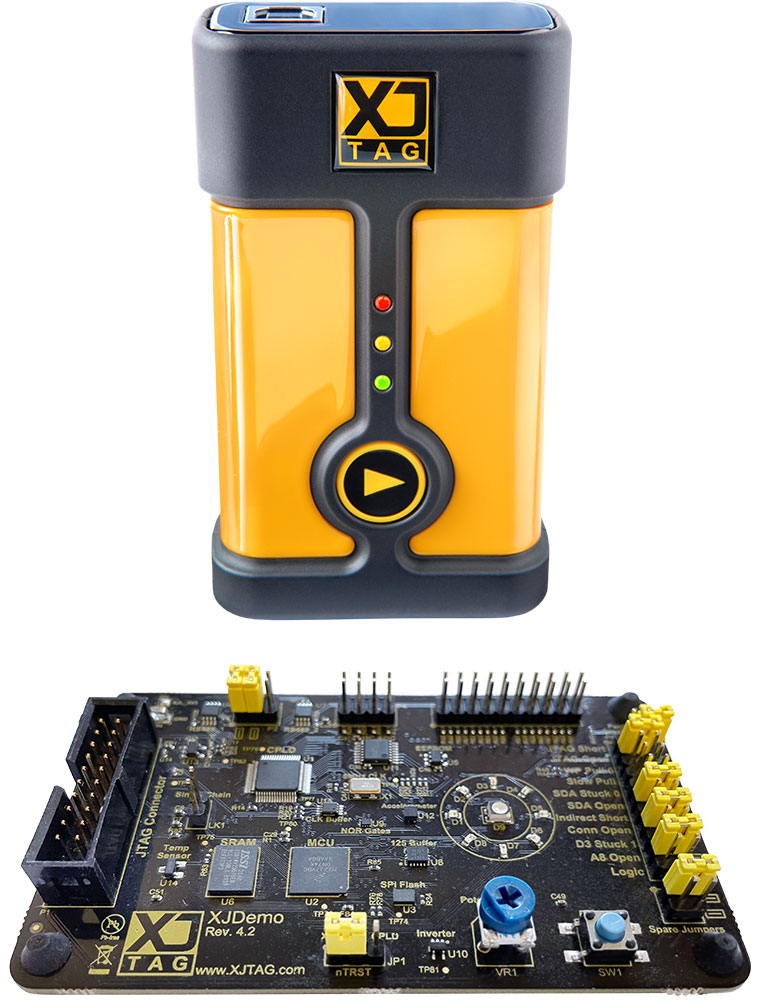Featured Capabilities
Fault Dictionary
Introduction
A key benefit of XJTAG’s integrated approach to Boundary Scan testing is that test development flows seamlessly from the prototype bench to the production test environment. Thanks to the Fault Dictionary, so can the causes of known faults.
Information sharing between development and manufacturing engineers
The Fault Dictionary enables board-specific information to be easily stored and effectively shared, providing an effective bridge between prototype and production. It also allows learning to continue at production time, with the ability to add faults to the dictionary as they are discovered.
The data gathered during prototype bring-up and in production test can be used to suggest a diagnosis automatically when similar faults are detected during later tests. A fault can be as simple as a single test failing, or can be made dependent on a particular combination of return values from a large number of functions. Fault conditions detected during test execution that meet the criteria defined in the Fault Dictionary will automatically cause your fault definition to be displayed on the test operator’s screen. This message can be used to provide instructions to basic users as they need them, and more importantly, to give detailed information to help repair engineers quickly and efficiently pinpoint the location of a range of common faults on the board.
The Fault Dictionary is passed to the production environment as part of the XJPack file, the secure container for an XJTAG project. Although the core of an XJPack file is not editable (in order to guarantee that the tests and auditing specified by the system designer are carried out) the Fault Dictionary can be added during test development or in production. This means that previous experience can point operators to likely causes for faults or particular combinations of faults. By documenting faults as they are encountered the fault finding effort required during production test is significantly reduced. This results in faster board throughput and higher yield.
Key Benefits
- Provides an easy way to share information between development and production teams
- Enables faster fault diagnosis and lowers manufacturing test costs
- Delivers clear results based on defined fault conditions
Features
- Allows any number of faults to be defined within XJDeveloper during the XJRunner Setup stage of test development
- Can provide test operators with clear instructions on how to fix known faults
- Avoids false positives by supporting multiple criteria per fault
- Automatically displays the likely cause (based on past experience) of known faults during production test
- Provides a running total of fault occurrences when tests are set to loop

Configure your products













